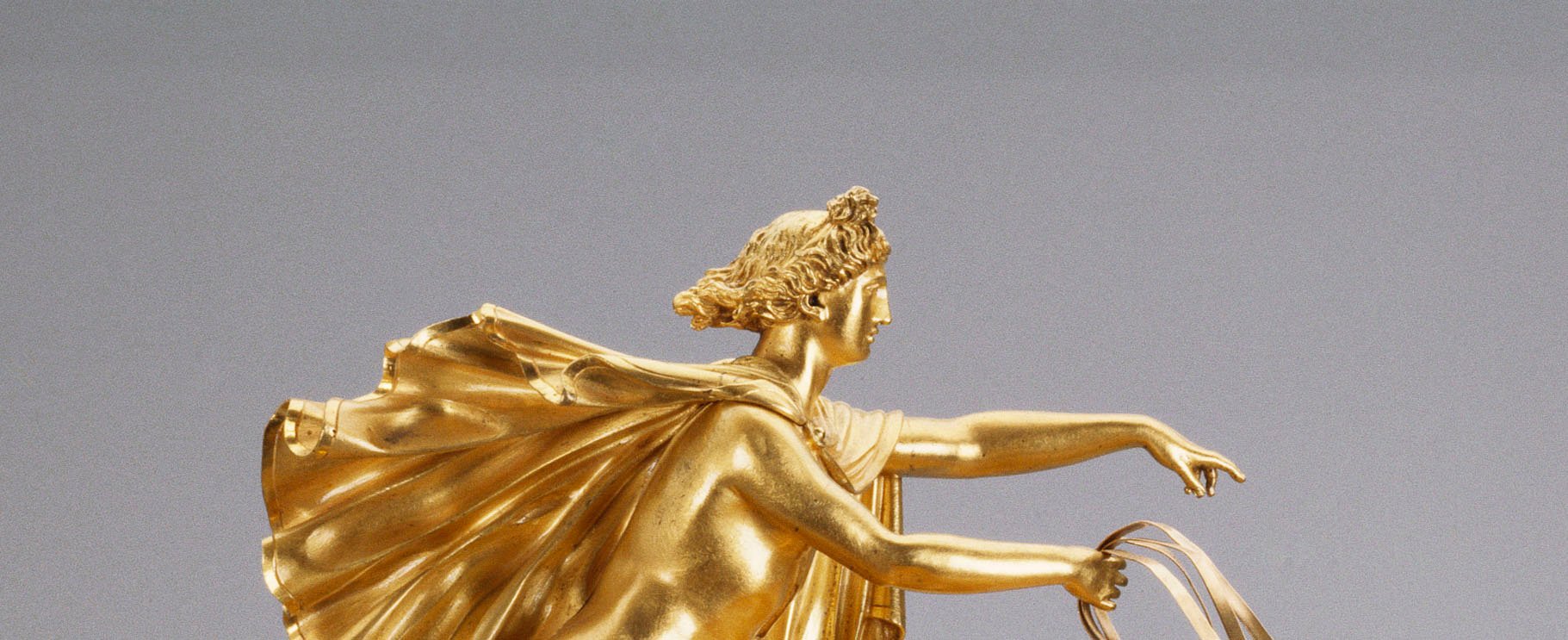
ITALIAN
Medusa
Intaglio: 18th c.; Mount: late 18th c.RCIN 65829
Intaglio of a head of Medusa, in profile to the right, with snakes intertwined in her hair. Inscribed at the back of the head in reverse Greek letters: ΣΟΛΩΟΝΟΣ (SOLONOS).
There are nine similar carnelian intaglios from the same hand recorded in an 1830 inventory of jewels at Windsor Castle. All the pieces are after highly popular and frequently copied ancient prototypes and this is a faithful modern copy of the famous chalcedony intaglio, signed by the gem-engraver Solon, now in the British Museum; spurious inscriptions of the name or initials of famous engravers of antiquity were common practice in the 18th century. They are all similarly shaped and have identical late 18th century mounts.
The intaglio is from the collection of Consul Joseph Smith of Venice and was acquired by George III with the Consul’s paintings, drawings, books, manuscripts and medals in 1762. However, whilst the gem was part of Consul Smith’s collection it is unlikely that it was executed in Venice; engravers capable of such high-quality work were found only in Rome. The group may tentatively be attributed to Anton Pichler (1697-1779) or Carlo Costanzi (1703-81). Both were Roman gem-engravers of great repute; Costanzi was particularly famous for his copies after the antique - he is known to have engraved the head of Antinous several times - ‘and none better’ - according to one contemporary.
Text adapted from Ancient and Modern Gems and Jewels in the Collection of Her Majesty The Queen, London, 2008







